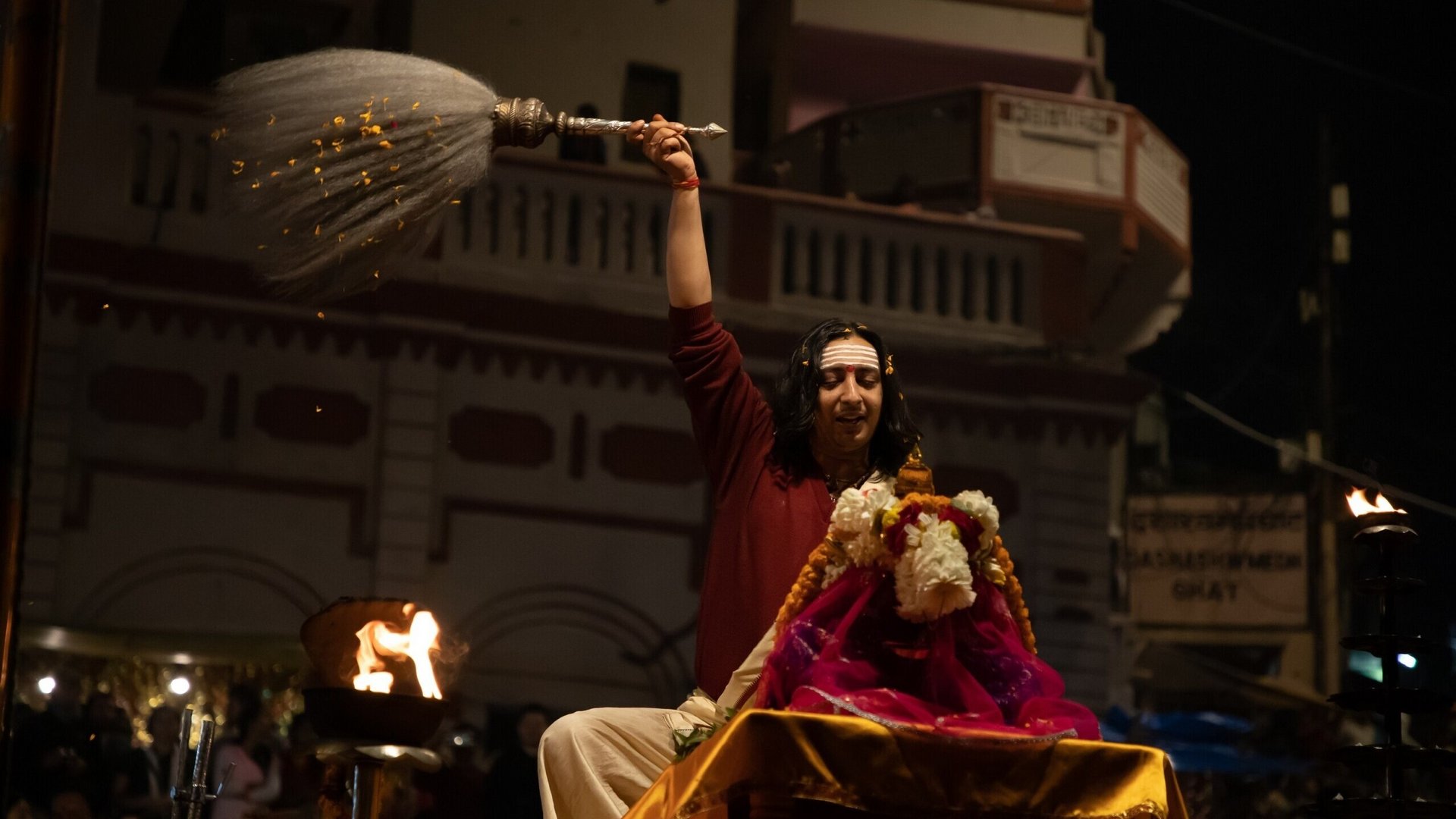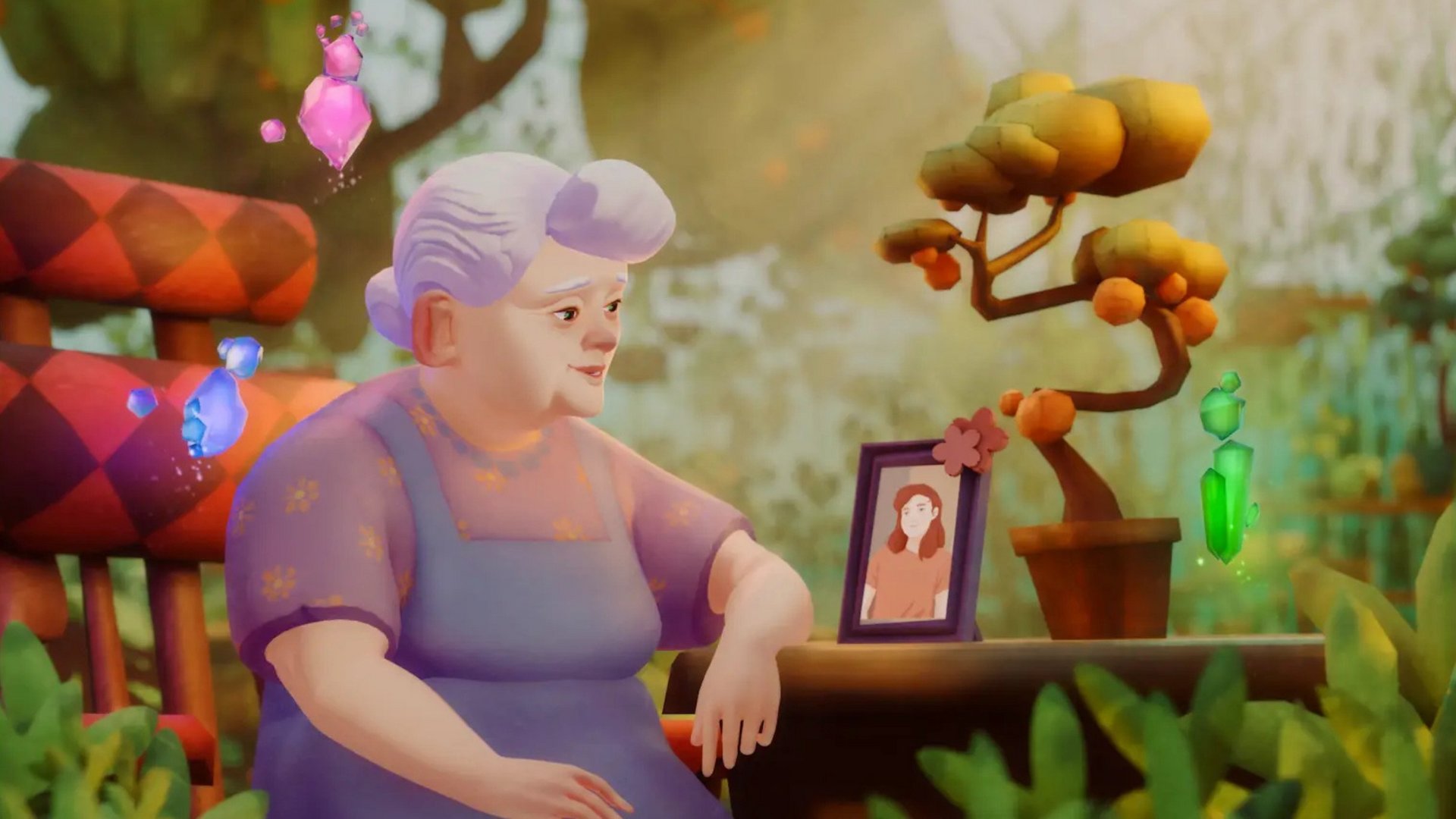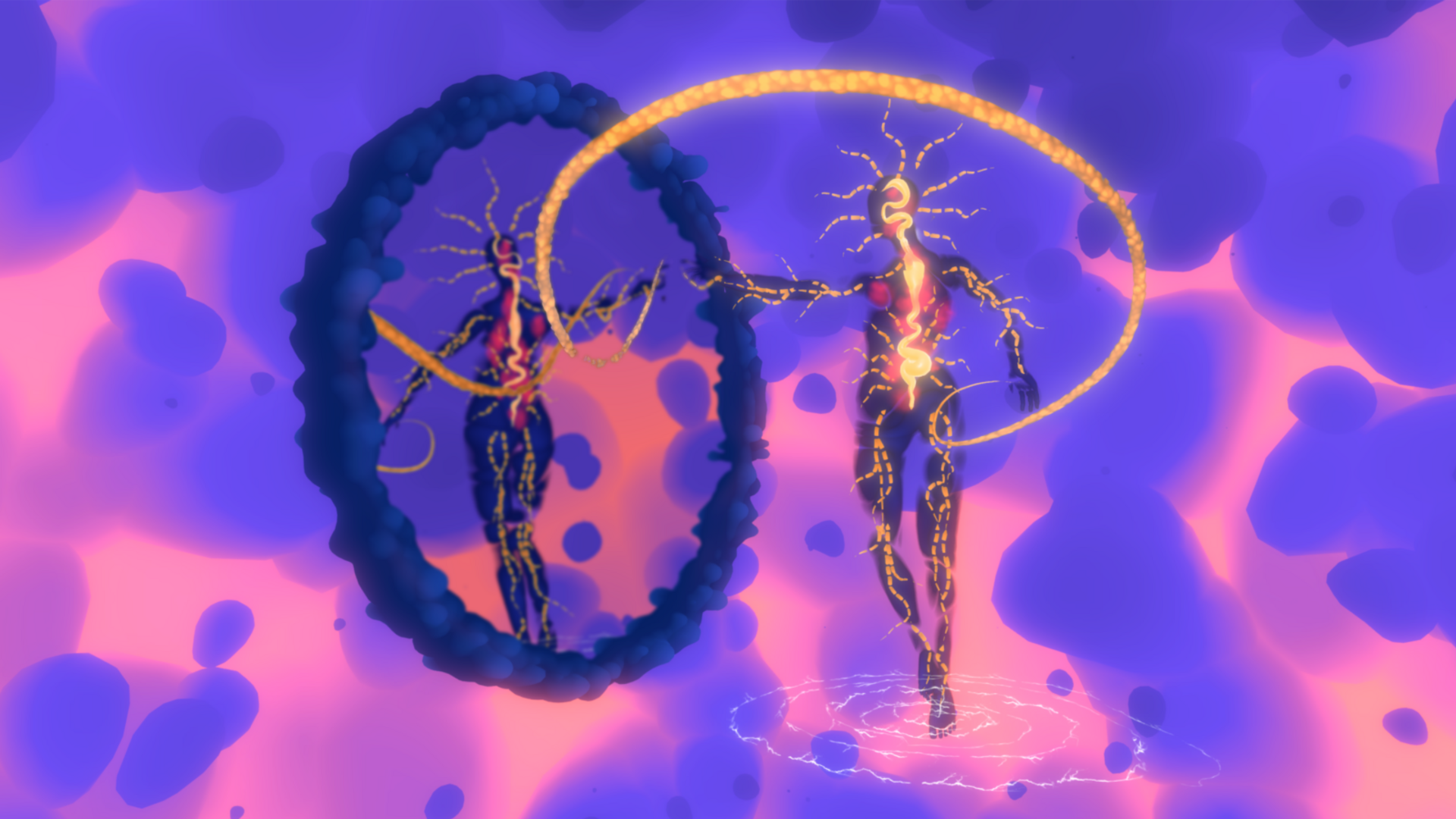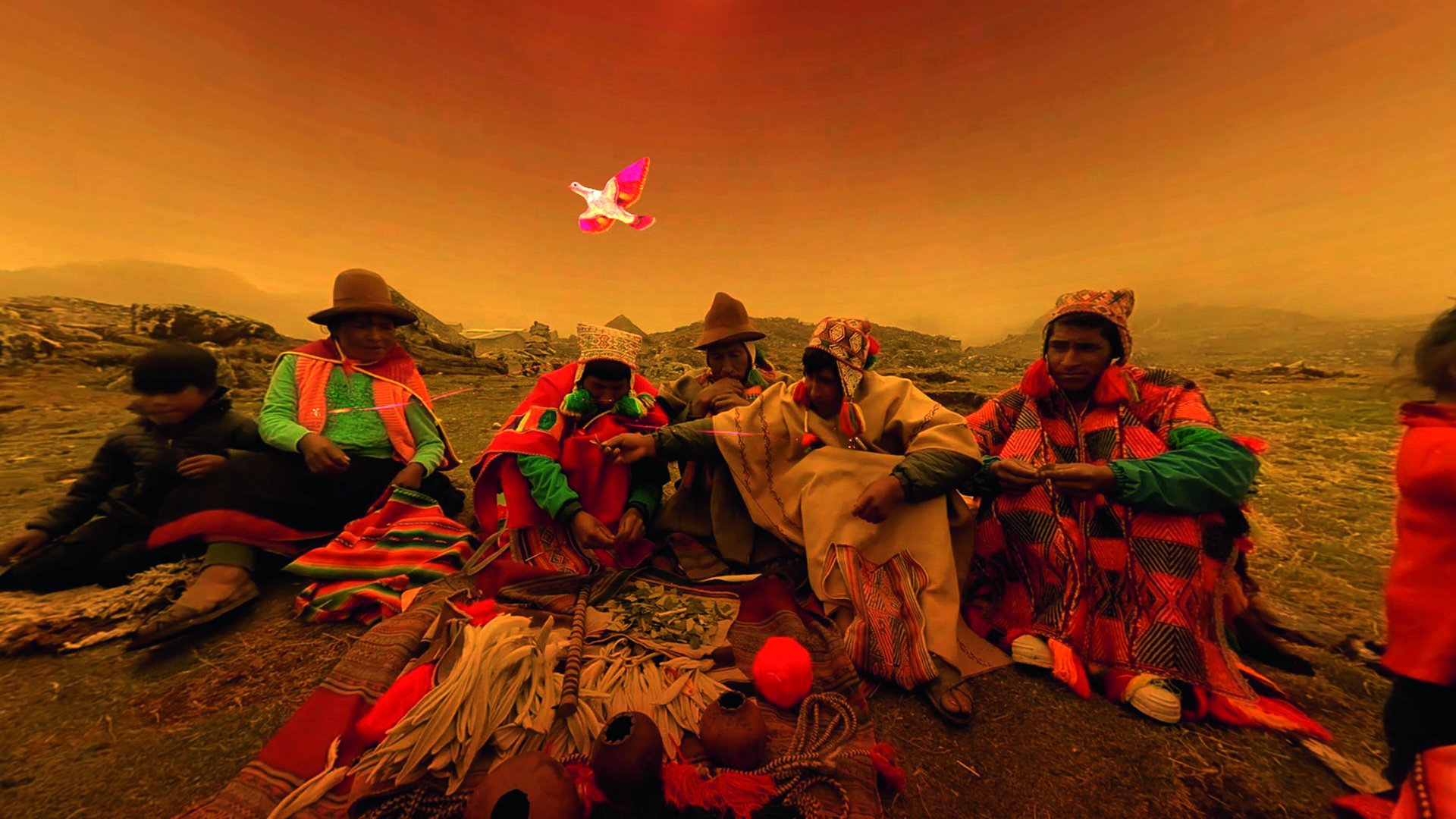

María José Díaz and Francisca Silva are the visionary creators behind 'Ancestral Secret VR', a virtual world that merges Indigenous storytelling with cutting-edge technology. This is a deeply immersive experience situated between tradition, spirituality, and innovation.
María José: Indigenous knowledge and its stories are so fascinating that they can be shared through any kind of medium. Ancestral Secret VR is actually the VR version of a series produced by La Ventana Cine (Chile), which conveys the stories, myths, and medicinal practices of ten Indigenous communities across the Americas—all of them truly wonderful.
In this particular VR project, we chose to focus on the Q’ero people. We knew from the beginning that it had to be a co-creation, and we decided to tell the story through VR. We wanted to go deeper—to create something more immersive and emotional than the original series. With this immersive experience, we tried to recreate, even just a little, what it felt like for us as visitors: entering their community with respect and humility, and having the privilege of being welcomed into their world.
Francisca: What’s fascinating is how this contemporary technology, which some refer to as ‘the future’, becomes a bridge to the past, resignifying ancestral technologies. Historically, these cultures have been labelled ‘backward’, but today, in the midst of this global crisis, we are witnessing a shift in consciousness that is allowing us to understand and appreciate many aspects of the Q'ero Nation, like how they communicate with the landscape, the mountains, and the spirits of nature.
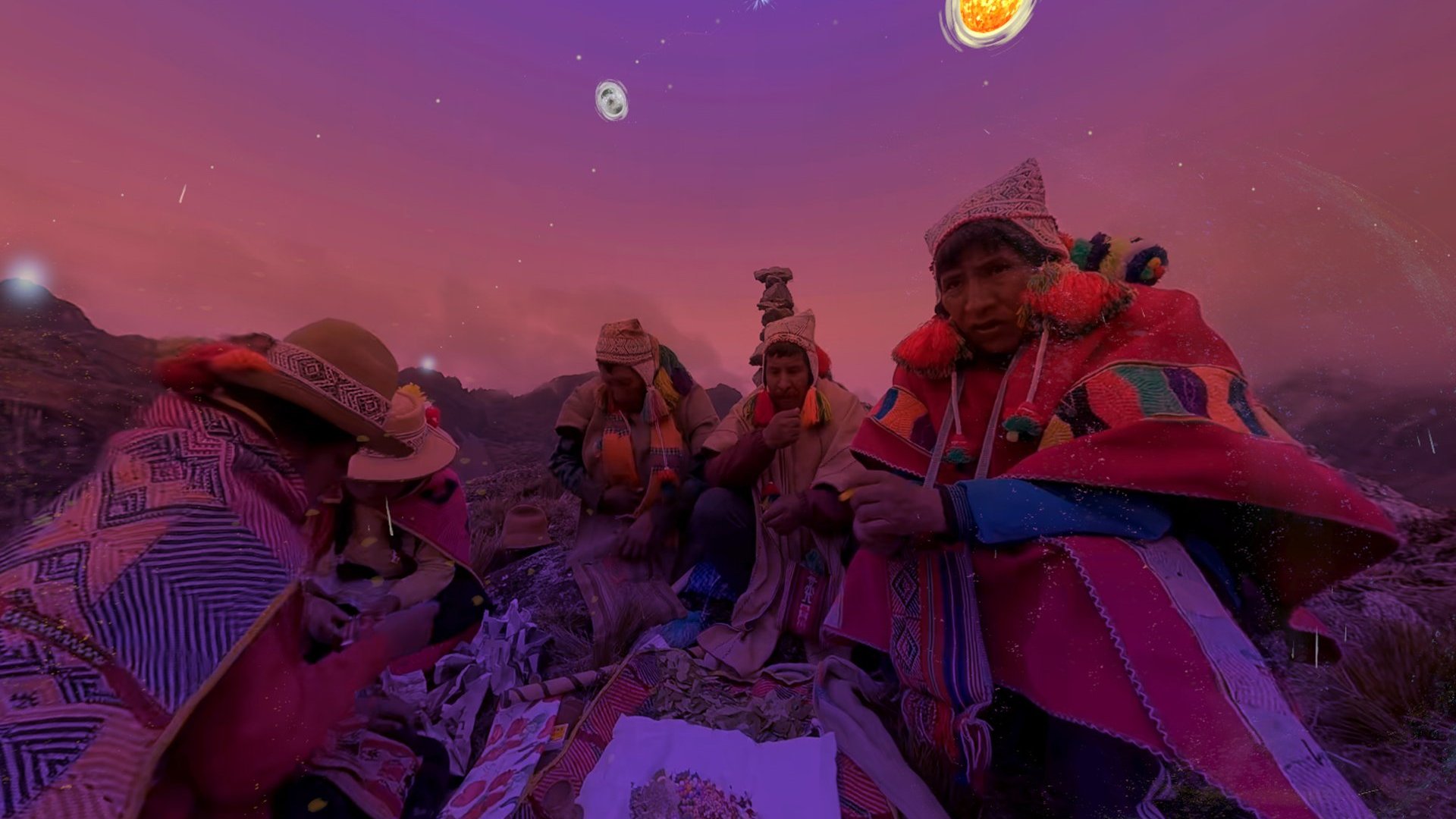
María José: During co-creation workshops, we identified certain key elements that had to be included: the coca leaf, the presence of water, the apus (mountain spirits), the textiles, and the offerings. Each of these holds deep spiritual meaning and connects the community to something much greater.
There were also other elements that we suggested ourselves, more related to narrative and technical aspects. Each one of these was discussed with Adrián Huamán, a dear Q’ero friend and a respected figure in his community—a young leader and messenger.
There were many things we agreed on, but others where he asked us not to portray them in such a fantastical way, requesting that we retain their solemnity and authenticity. He also encouraged us to make the animated effects subtle, so as not to diminish the spirituality behind them.
María José: We had developed a first meaningful connection after our first research trip in 2019 and then began building trust with members of the community. We approached everything with respect, openness, and care. Gaining their trust took time, but it wasn’t difficult—trust was built with a caring attitude. I think the fact that we came with open hearts and created a space where they could share whatever they wanted with us was really important. During that trip, we proposed the idea of a co-creation project, and they accepted joyfully.
Our second trip focussed on co-creation and filming, and took place two years later. We had a full workshop programme prepared, but once we got there, everything changed. We ended up setting aside almost all of our planned activities and opened ourselves up to their rituals and the way they wanted the workshops to unfold. Instead of structured sessions, we simply shared. We talked about our lives, our work, our dreams, and our experiences in nature.
We showed the community some of our previous projects and other VR pieces to help them understand the medium, especially those who had never encountered it before. We painted, played, and laughed. More than anything, it was a time of sharing—and that spirit stayed with us throughout the project.
Francisca: One moment that really stayed with me took place on a filming day when it wouldn’t stop raining and we had to film the offering scene. We were heading to one of the highest points in the community, a place from which all the mountains can be seen. But when we arrived, everything was covered in thick fog—the entire landscape was hidden.
We had previously spoken with Marcelino, the pampamisayoc (Andean spiritual guide), to prepare an offering specifically for the apus. Some offerings are made to Pachamama, Mother Earth, while others are intended for the mountains. This one was for the mountains.
What happened next was truly magical. As the scene unfolded, the fog began to lift, little by little, as if responding to the ceremony. And in the final experience, you can actually see how, throughout that scene, the landscape gradually opens up and the mountains slowly reveal themselves before our eyes.
María José: The goal is to fulfill the original promise of this project: to take the message of the Q’ero to as many corners of the world as possible so that people know that, at the foot of the Ausangate Mountain, there is a community called the Q’ero who live a life guided by nature. And for that reason, we all need to take care of nature—together—because we’re all part of it.
It’s about planting a small seed so that whenever a human being encounters nature, they do so with respect, with care, by asking for permission. Feeling that nature is something greater than us, more powerful, and much more worthy of our respect.
This is what the project is about—about different cultures coming together, meeting, and forming alliances for the common good. In times of war, we need to feel this deeply—the need to connect, to collaborate in a reciprocal, healthy, and loving way with others and with our surroundings.
Francisca: In terms of distribution, one of our core goals is to bring Ancestral Secret VR into schools. Teachings about Indigenous peoples are increasingly absent in classrooms, and when they are included, they’re often reduced to something brief and disconnected from the logic and worldview of those communities.
Students are the change-makers of the future, and we care deeply about reaching those spaces—and about developing complementary activities alongside the VR experience. We want VR to be understood not just as an immersive medium but as a tool that can invite viewers to help create a broader ecosystem of learning, reflection, and meaningful exchange.
María José: The world is dominated by a colonial mindset—one that views Indigenous peoples as those who need to be ‘helped’, ‘evangelized’, ‘educated’, or ‘integrated’. This is an inherently biased perspective, trying to impose standards created by states onto their Indigenous populations. And that, I believe, has caused the most harm—not just to the Q’ero, but also to the Mapuche in Chile and to many other Indigenous communities who have their own values, customs, rituals, knowledge, territories, and ways of being.
Without exoticizing them, this project hopes to highlight Q’ero and Indigenous pride—not to idealize it, but to show that this humble, accepting relationship with the rhythms of nature has something to teach us.
Francisca: The richness of having enough sensitivity to connect so intimately with nature—being able to listen to it and be listened to by it— is something that moves me deeply. There is immense wisdom in the way that the Q’ero relate. For them, everything begins with gratitude. The first step is always to give thanks: to be thankful for being gathered together, for the food, for each encounter.
Warmth, tenderness, kindness… the Q’ero embody and inspire all of this. I’ve seen how this project awakens something different in each person—something deep and moving. This is a seed of awareness that we hope will sprout, bloom, and grow in each of us.
